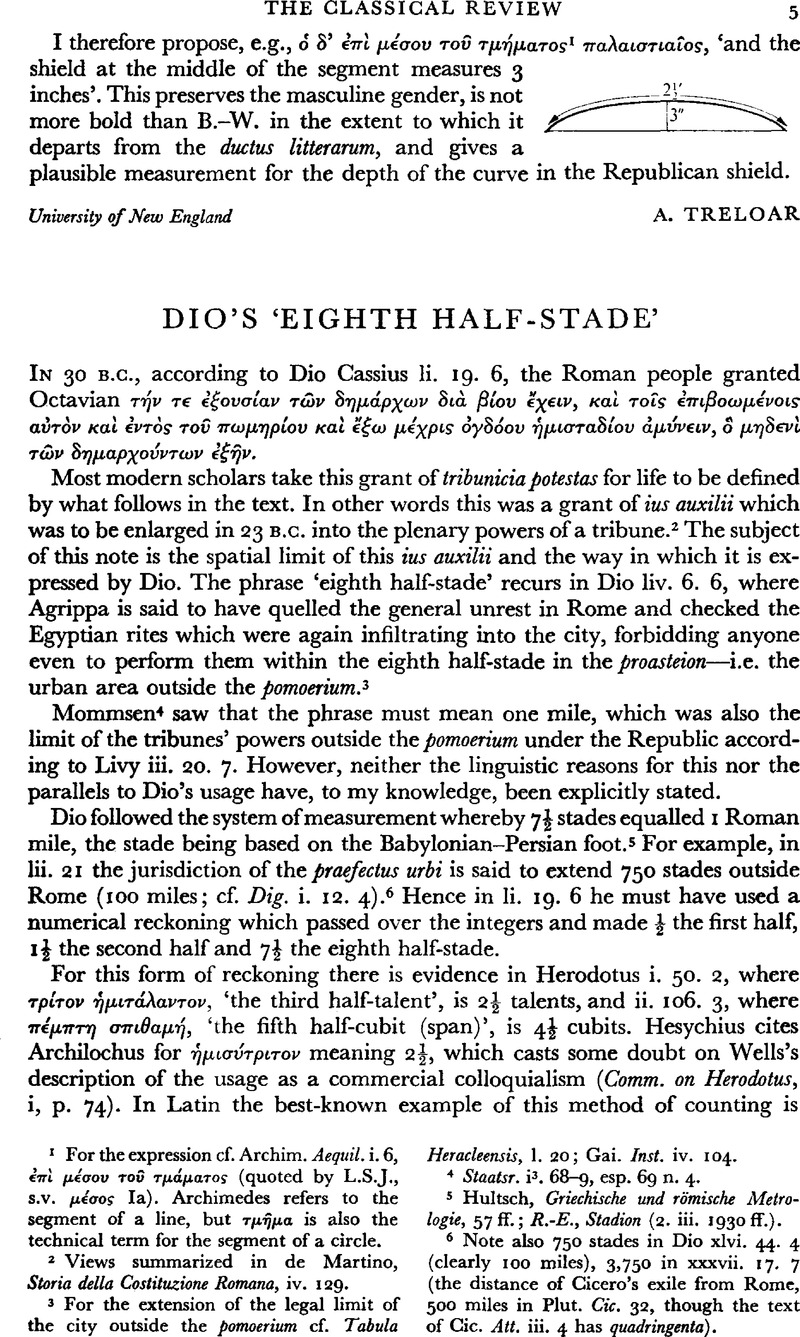No CrossRef data available.
Article contents
Dio's ‘Eighth Half-Stade’
Published online by Cambridge University Press: 27 February 2009
Abstract

- Type
- Review Article
- Information
- Copyright
- Copyright © The Classical Association 1971
References
page 5 note 2 Views summarized in de Martino, Storia delta Costituzione Romana, iv. 129.
page 5 note 3 For the extension of the legal limit of the city outside the pomoerium cf. Tabula Heracleensis, 1. 20; Gai. Inst. iv. 104.
page 5 note 4 Staatsr. i3. 68–9, esp. 69 n. 4.
page 5 note 5 Hultsch, , Griechische und römische Metrologic, 57 ff.Google Scholar; R.-E., Stadion (2. iii. 1930 ff.).
page 5 note 6 Note also 750 stades in Dio xlvi. 44. 4 (clearly 100 miles), 3,750 in xxxvii. 17. 7 (the distance of Cicero's exile from Rome, 500 miles in Plut. Cic. 32, though the text of Cic. Att. iii. 4 has quadringenta).
page 6 note 1 Rustics gave the bipalium (double mattock) the name of sestertium, because it provided a measure of two and a half feet (Col. Arb. i. 5; cf. R.R. iii. 5. 3).
page 6 note 2 De Figuris Numerorum 16–7 (ii, p. 411 Keil). On Claudius Didymus see Suidas s.v.


